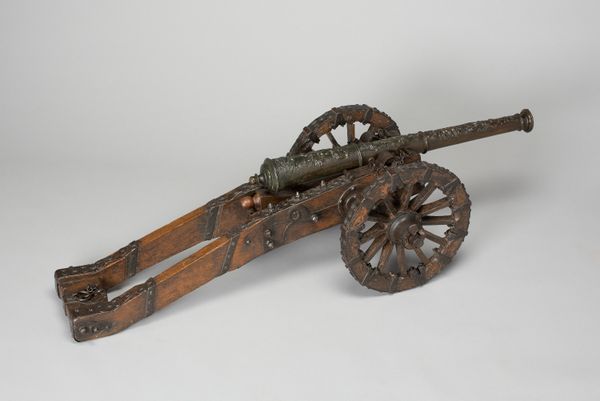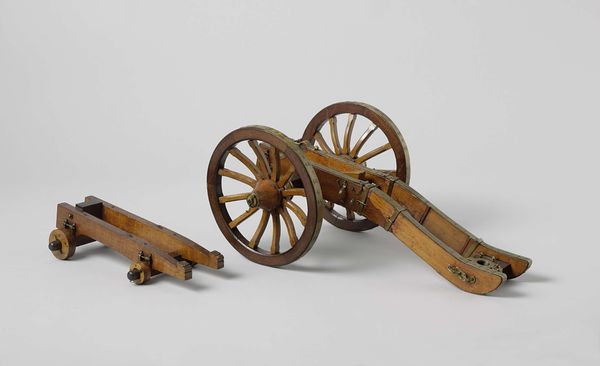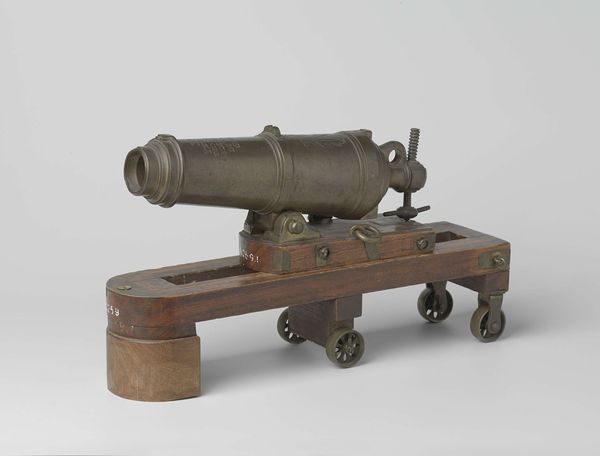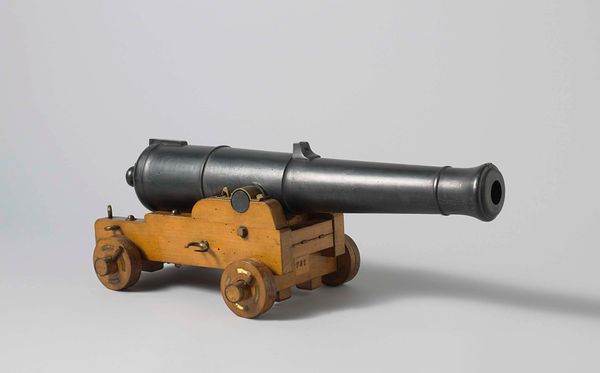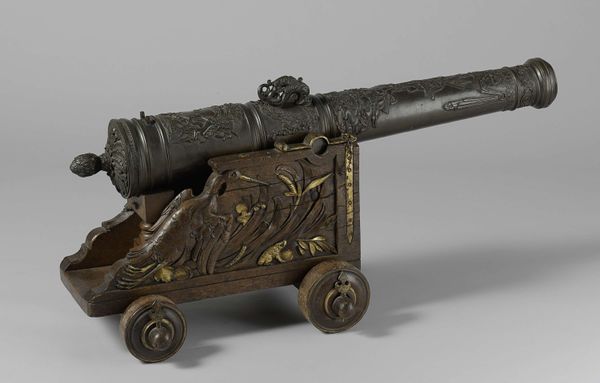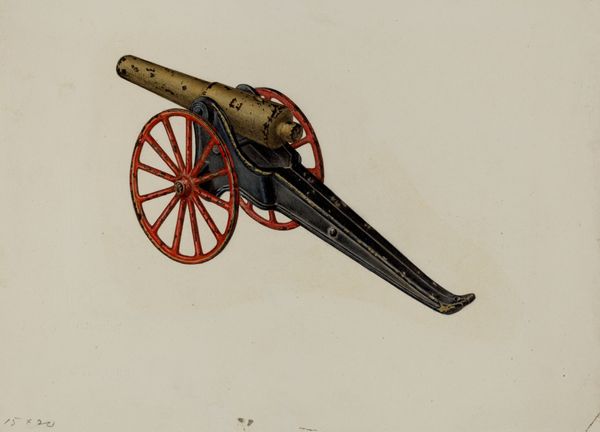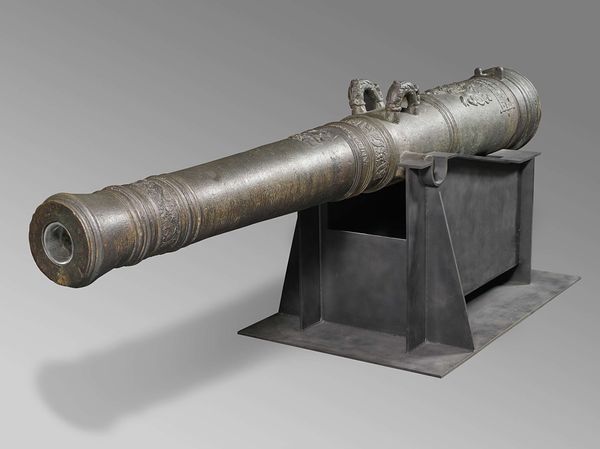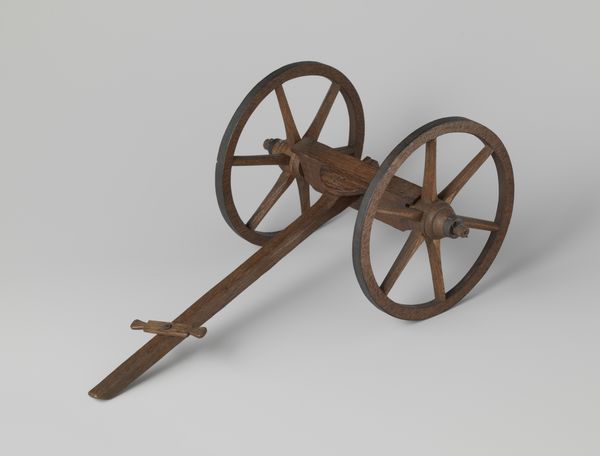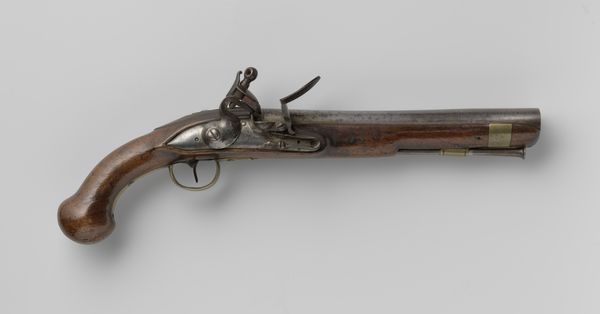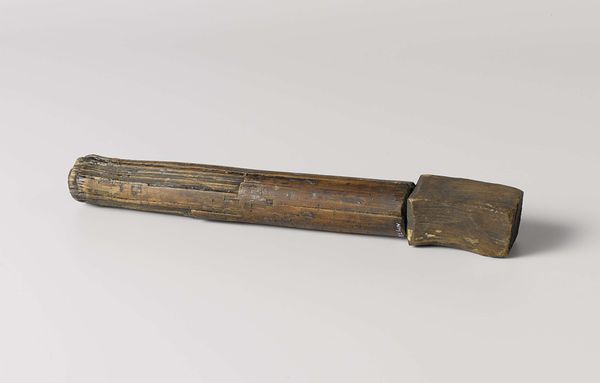
metal, bronze, sculpture
#
medieval
#
metal
#
sculpture
#
bronze
#
11_renaissance
#
sculpture
#
history-painting
#
statue
Dimensions: Length of barrel: 26 15/16 in. (68.5 cm) Bore: 25/32 in. (2 cm) Caliber: 29/32 in. (2.3 cm) Left cheek to end of trail: 32 1/8 in. (81.5 cm) Width at cheek: 4 3/4 in. (12.1 cm) Width at trail: 7 1/8 in. (18.1 cm) Diameter of wheel: 11 7/8 in. (30.2 cm) Distance between outer side of hubs: 14 3/4 in. (37.5 cm) Distance between mounted cannon muzzle and end of trail: 44 3/16 in. (112.3 cm) Weight of cannon: 23 lb. 2 oz Weight of carriage: 21 lb. 8 oz.
Copyright: Public Domain
Editor: So here we have what's described as a Model Cannon, specifically a Culverin, dating back to sometime between 1580 and 1600. It's crafted from bronze and other metals. It's... smaller than I imagined a cannon would be. A bit ornate, really. What historical significance do you think a piece like this holds? Curator: This isn't just a miniature cannon, but a reflection of the power dynamics and technological advancements of the late 16th century. Consider how the creation and display of such an object spoke to the patron’s wealth and military knowledge. Do you notice the detail in the design? Editor: Absolutely. There's an almost delicate quality to the embellishments which does seems at odds with what it *is*. Who would commission something like this? Curator: Exactly. The cannon served not just a practical purpose, but also as a potent symbol of status. Think about the workshops capable of such fine metalwork and the courts which commissioned them. Who do you think would be likely to view and be impacted by a work like this? Editor: Aristocrats? Rulers, or aspiring ones? Those who could understand the visual language of power? Curator: Precisely. This “model” transcends mere function; it’s designed to impress an elite audience that was both educated about and implicated in military technology and authority. Also, in what public spaces, and under what viewing conditions, would this kind of technology most likely be on display? Editor: I guess a royal collection, or an armoury, maybe displayed as part of a celebration of military strength? Thinking about its public role puts the artwork in a completely different light. Curator: Yes. This object’s artistic merit is inseparable from its political function as a testament to power. Editor: It is almost like propaganda! Thanks. I definitely have more to think about regarding the layers of cultural significance surrounding an object like this.
Comments
No comments
Be the first to comment and join the conversation on the ultimate creative platform.
